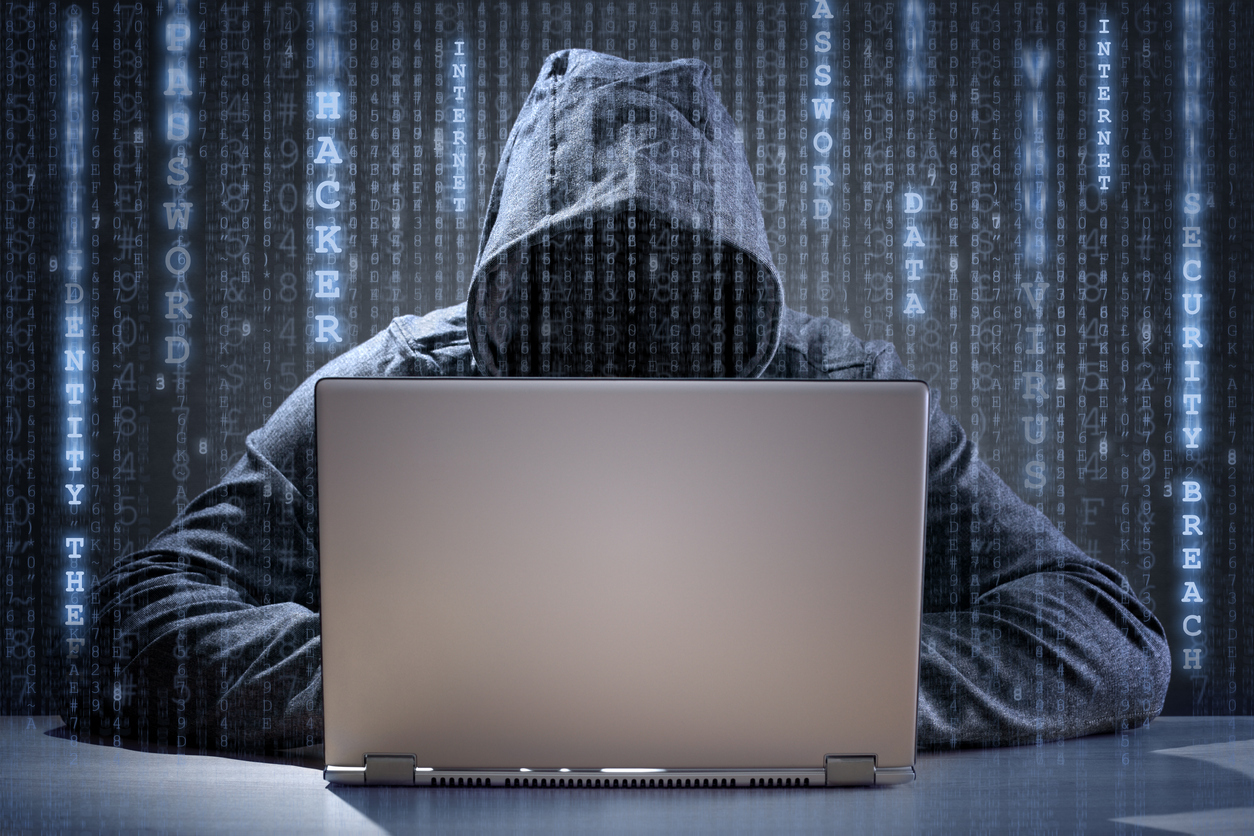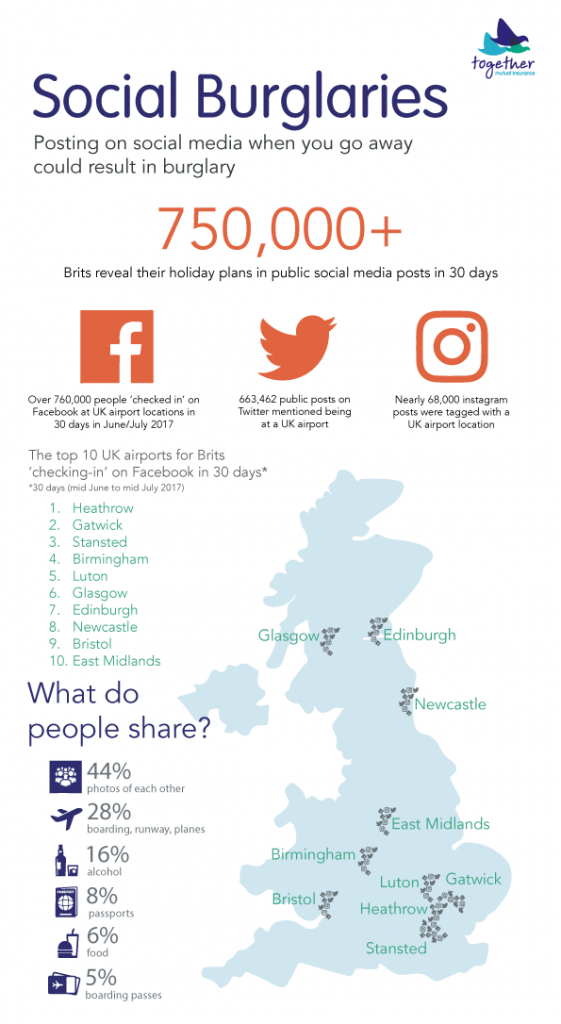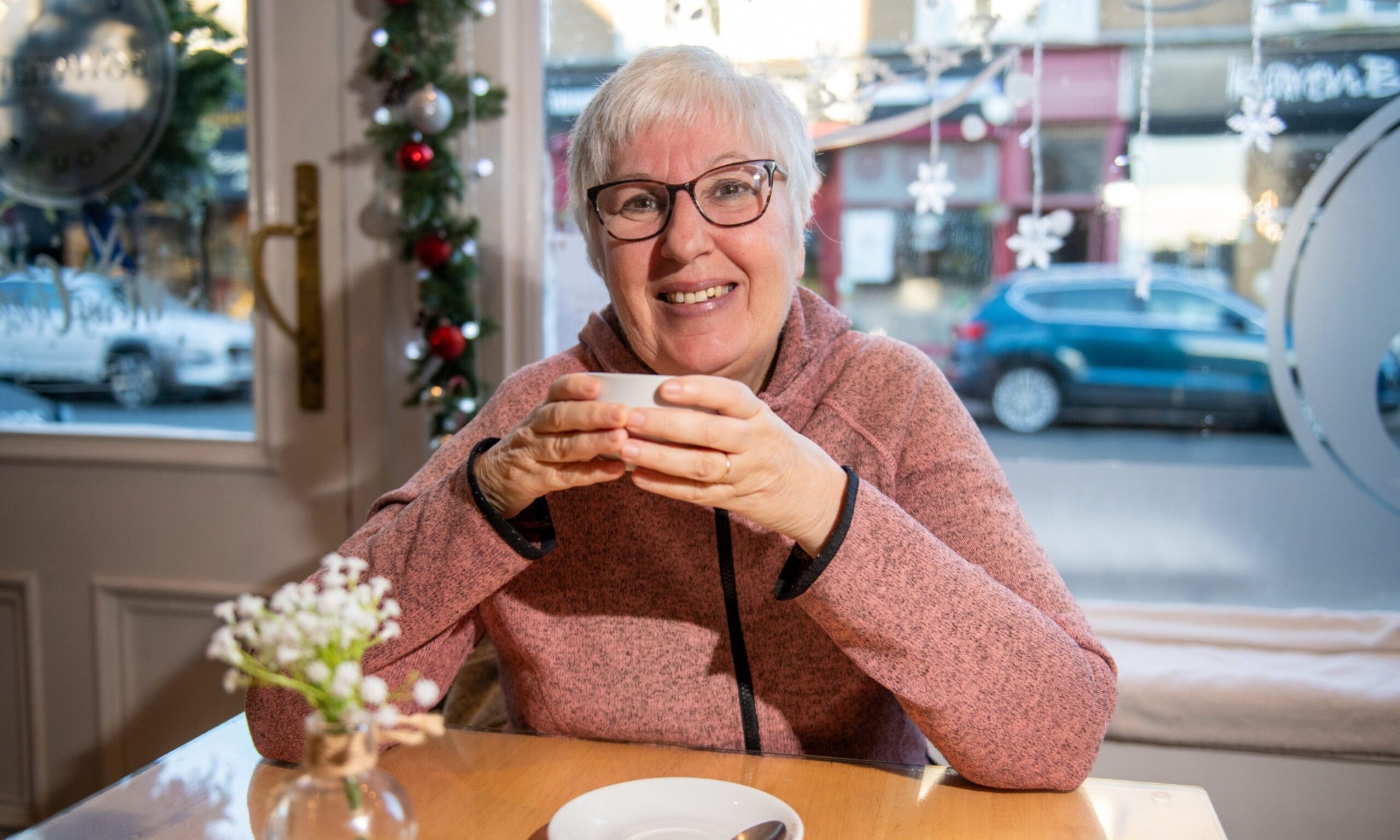Nearly 700,000 Brits a month post about going abroad – at the exact moment their homes are empty
A new report revealing the scale of social media posting across Facebook, Twitter and Instagram has highlighted how more than 1.5 million airport check-ins or holiday posts were made about trips in June – nearly half of us doing so while our homes were empty – raising the risk of crime and potentially invalidating home insurance policies.
The news comes as 7% of those who publically revealed their holiday plans state they have been burgled while on holiday, compared to just 2.5% of those who kept their trip private. Despite this, 58% state they do post-holiday snaps online when they are abroad. This amounts to 695,000 empty homes put at risk of burglary. Of those asked in more detail about their holiday posting habits, 44% have tagged friends too, further increasing the risk posed online.
The report, from publically available data available across the three platforms, found that, over a 30-day period between June and July this year, holiday-goers made 750,000 public posts, which volunteered the absence of their homes by describing their holiday plans. An additional 760,000 public airport check-ins took place on Facebook. This amounts to 4% of monthly airport passengers putting themselves at risk. With one in ten people unaware of their social media security settings (9%) it might be a holiday risk too far.
From the 29 airports analysed, the highest proportion[i] of passengers who publically check-in on Facebook per UK departure airport are:
- Glasgow Preswick (9%)
- Newcastle (8%)
- East Midlands (6%)
- Liverpool John Lennon Airport (6%)
- Birmingham International (6%)
- Robin Hood Doncaster Sheffield (6%)
- Belfast International (5%)
Top airport holiday spam
Group shots take the place of the selfie in the departure lounge with the highest proportion of publicly shared holiday content at airports being people (44%). Worryingly, one in twenty (5%) of people posting content choose to publicly share their boarding pass which could leave their homes vulnerable to theft.
Newcastle tops the list of those most likely to post pictures of their alcoholic beverages with a third of its social posting passengers choosing to snap their beverage (32%) followed by Birmingham (20%), Glasgow (18%) and Manchester (18%).
Instagram had a total of 68K posts tagging an airport location with popular content themes including airport and plane selfies, runway shots and pre-flight food and drink.
Top holiday destinations mentioned
It seems Spanish sun seekers are the most likely to reveal their final holiday destination (22% of destination content), followed by those going to the USA (12% of destination content)
Jon Craven, CEO of Together Mutual Insurance said: “We know from our social media research that there is a significant level of risk posed online when people travel abroad that could be affecting the security of households across the UK.
“While people may be quick to post their holiday excitement in an instant, don’t forget it’s not just the usual holiday spam that could leave you vulnerable. For example, making online customer service enquires or complaints can be a risk you may not realise.
“First and foremost, you should make yourself familiar with your social media security settings, and those of your friends who may be likely to tag you. Why not wait until you get back before you share your snaps, that way you can pick the best bits and reduce your risk?”











